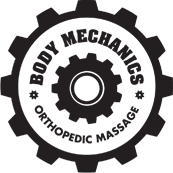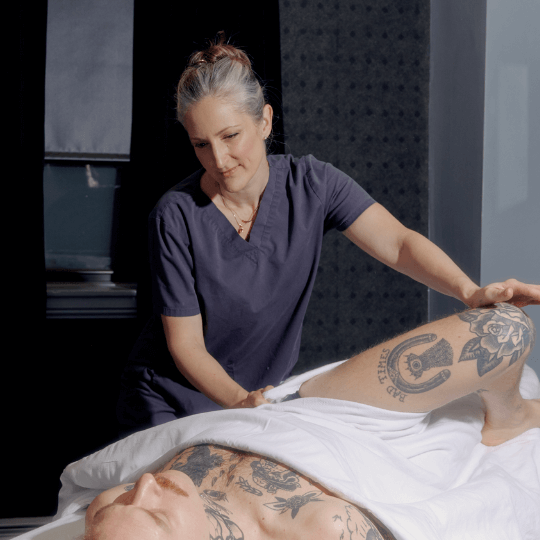Walt Fritz’s Myofascial Release Seminar for Neck/Voice/Swallowing Disorders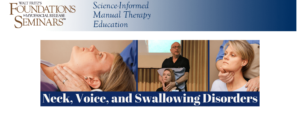
Before I get into the meat of this, there are a few things to note. This class, ‘Myofascial Release Seminar for neck/voice/swallowing disorders,’ is named for the conditions that may occur in the area being treated, as well as how the touching is done. While the title is ‘neck/voice/swallowing’ you can use many of the cervical techniques with any patient who has neck discomfort. To further the point about the course name, it also is named for Myofascial release. However Walt is not suggesting that this modality is meant to replace whatever intervention you are already using or that you should just go pulling on skin. We frequently have a description problem when it comes to manual therapy and courses that operate within the realm of scientific reality. The question becomes, what do you call things when your tag is “this may help some people, some times, in some way, with some things…but it also may not”. So if you are fine with the spirit of this, keep reading.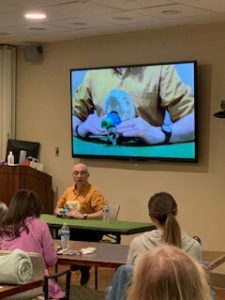
Two other staff members (Tommy and Sylvia) and I attended this course in April of 2019. It is a two day seminar. This particular one was at the Grabscheid Voice and Swallowing Center of Mount Sinai near Union Square. The attendees were mostly speech pathologists, with a smattering of other professions, including massage therapy. I will get back to who is in the course, but one of the reasons I have admired Walt’s classes is that he has taken the time to get his classes approved for New York State Massage Therapy continuing education credits. In New York State, it is super hard to level up your skill set when the same information is being taught and re-taught by the same professionals, over and over again.
Walt’s class was well attended and well organized. He utilizes helpers to make sure you get real feedback ,even though you are in a large group. Snacks and coffee were provided, although we did not need the coffee to keep us awake.
If research is your thing, Walt does provide it with his materials, but
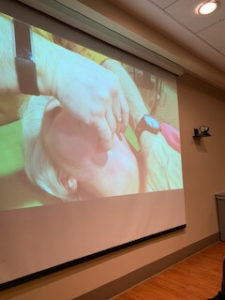 you are not going to go into a deep dive in this class. He will give you an introduction and you are welcome to proof on your own. The assumption is that you are a professional and as such, it is your job to review this information. A small amount of time was spent on this. In this way the class was pretty neutral in the “how we think this works” department. It is not likely to radically change anyone’s mind on the function of manual therapy. That being said, I am not really sure anyone’s mind can be changed unless they want to. That is another topic entirely.
you are not going to go into a deep dive in this class. He will give you an introduction and you are welcome to proof on your own. The assumption is that you are a professional and as such, it is your job to review this information. A small amount of time was spent on this. In this way the class was pretty neutral in the “how we think this works” department. It is not likely to radically change anyone’s mind on the function of manual therapy. That being said, I am not really sure anyone’s mind can be changed unless they want to. That is another topic entirely.
The same goes for anatomy in this course. Walt provided some information in the form of his manual, but the goal is not to teach you anatomy. If you are a little rough on what goes where in the head, face, neck and jaw, I would recommend flipping through your anatomy book before attending. You will get a lot more out of the course by being able to connect the dots. Keep in mind that he is not trying to reinvent the wheel, just showing you different ways you can roll it. If you are struggling to find a touch that feels safe and appropriate due to anatomy, you might be slowed down.
This class follows the fairly typical pattern of the presenter talking about what you are going to demo, then performing a demonstration on a willing subject, before you split off and practice on each other.
There are three things I like about Walt Fritz’s Myofascial Release Seminar:
- He utilizes technology to solve the issue of everyone standing around him, blocking the view of those behind them, while he demos. One of his helpers was present at all times to get a live feed video on the manual actives that he is showing. That video was then projected onto three screens so that everyone in the conference hall could access it as if they were in the front row. The space we were in was well set up for that, and other spaces may not be, but I can only assume if he took the time to do it thoughtfully this time, he probably does in most spaces if there is need.
- Walt gives his interview process with a patient equal weight to the hands on that he is doing. In most classes, manual or otherwise, teachers often jump to new technique. The format becomes ‘for this problem use this thing”. Not so here. Walt lets you sit in on his client/patient interview. If you are a massage therapist, who wants to improve quality, booking, professionalism etc, this is 100% the area that you need to work on. Sitting in on this is gold. What he is showing is a conversational health care format of “ol’ dr fricara” interview and an adapted motivational interview strategy that continues on to the treatment in the form of feedback (remember consent is an ongoing process).
- He has a mixed profession class. For many of the speech path professionals manual therapy was new. They got to work with massage therapists. I think they learned a lot from them. For the massage therapists we got to work with speech pathologists….same story. Both sets came away with great referrals and a really good understanding of how we might work together to better care for people. Rather than pair off into our professions, we sought out the other for their expertise. It was a unique opportunity.
As to the things I did not like. To be honest, I would have to be super nit-picky about this. It is a great class. I would say if you are really comfortable working cervical spine in multiple ways manually, or intra-oral treatment is in your wheel house already, it might be a little slow for you. Both Sylvia and I spend a fair amount of our days in working with TMD, so much of this was review. Even so, we managed to come away with some good take aways. Even if this is the case, there is HUGE value in watching how someone else problem solves the same problems. This course assisted us in the decision to add ‘dycem’ as a home care tool for our population, as they often struggle to figure out how to self treat at home in a way that feels good.
Walt also provides ongoing support in his facebook groups (invite only) and his YouTube channel for Myofascial Release.
So to wrap it up on Walt Fritz’s Myofascial release seminar:
If you are a speech pathologist, much of what he teaches will give you a fresh approach and more options, if you are a massage therapist, this is right up your alley, and will be a detailed course getting you comfortable with helping cervical/jaw/neck pain and problems.
